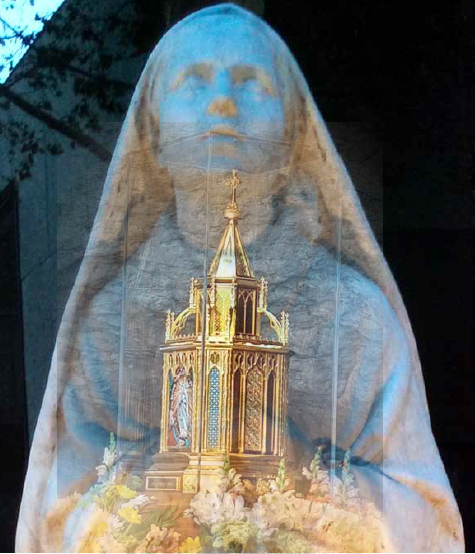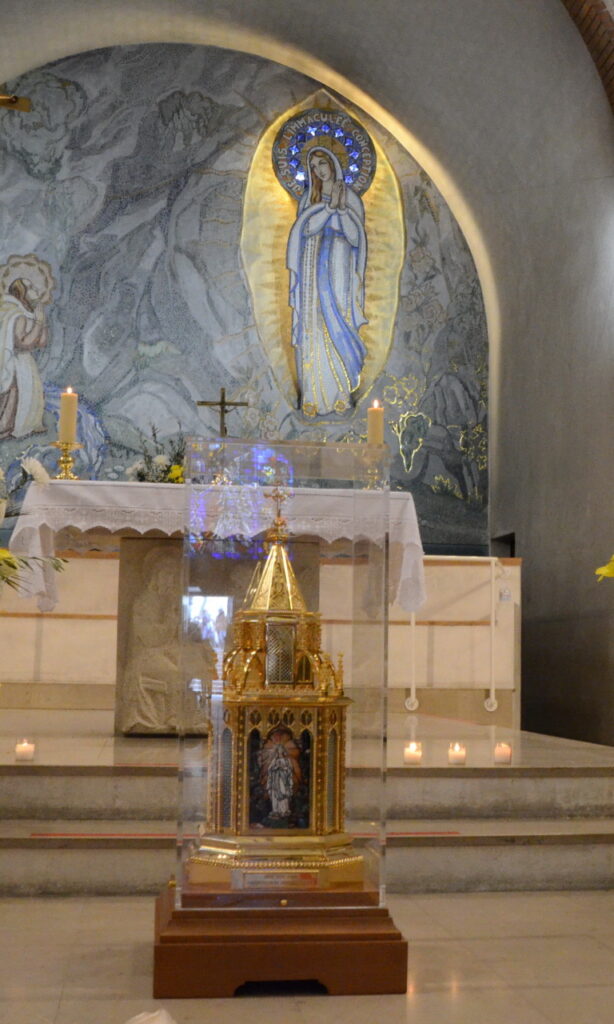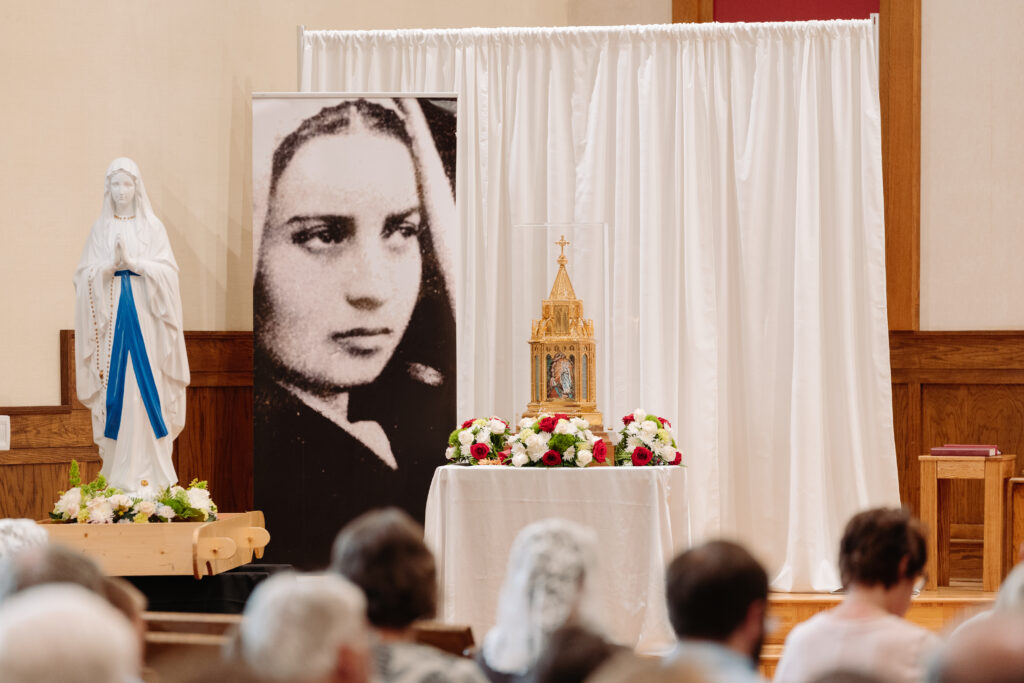The Relics of Saint Bernadette
What is a Relic?

In the religious tradition, a relic refers to a part of a saint’s physical remains after death, or an object that came into contact with their body. The relics used during missions are authenticated and classified as Ex-Ossibus, meaning fragments of the bones of Saint Bernadette, whose incorrupt body rests in Nevers.

Why Does the Catholic Church Encourage the Veneration of Relics?
The veneration of relics is deeply rooted in Catholic faith, with both biblical and historical foundations.
In the Acts of the Apostles, Saint Luke recounts:
”God did extraordinary miracles through Paul, 12 so that even handkerchiefs and aprons that had touched him were taken to the sick, and their illnesses were cured and the evil spirits left them.” (Acts 19:11-12)
This biblical precedent demonstrates that not only did Saint Paul perform miracles, but even objects that had touched his body were instruments of divine healing.
The veneration of relics is a natural human inclination, found across various religious traditions, reflecting the desire to honor and preserve what is associated with loved ones who have passed away.
By inviting the faithful to venerate the mortal remains of martyrs and saints, the Church acknowledges that, while these are human remains, they belong to individuals touched by God’s transcendent power. Relics serve as a testament to God’s presence, a light in the shadows of the world, revealing the Kingdom of Heaven among us.
Three Reasons for the Veneration of Relics in the Catholic Faith:
The spiritual significance of the human body.
Hope in the resurrection and eternal life.
A bond of friendship with the saints of the Church.
The Body and Relics of Saint Bernadette
An Incorrupt Body Discovered Three Times During the beatification and canonization processes, the body of Saint Bernadette was exhumed on three occasions (1909, 1919, and 1925) and found to be incorrupt each time. Reports from that era describe it as an instance of “spontaneous mummification.”
On April 18, 1925, 46 years after her death, the body of Saint Bernadette Soubirous was exhumed to collect relics.
Doctors Comte and Talon, entrusted with the procedure, described her body as having “a soft and almost normal consistency.” According to the official records preserved in the Archives of Nevers, the following were collected as relics:
• A fragment of the 5th rib.
• A fragment of the 6th rib.
• Both kneecaps.
• A muscle sample from the outer side of the right femur.
• Hair.
• Several fragments of muscle and skin.
The preservation and distribution of these relics were entrusted to the Congregation of the Sisters of Charity of Nevers under the supervision of the Bishop of Nevers. Some relics were offered to the Sanctuary of Lourdes as ex-carne or ex-ossibus fragments.
On June 14, 1925, Pope Pius XI proclaimed Bernadette Soubirous “Blessed.” Her body was transferred to its current reliquary in Nevers on July 18, 1925.
On December 8, 1933, Pope Pius XI canonized Saint Bernadette, whose feast day is celebrated in France on February 18.

The Sanctuary of Our Lady of Lourdes offers four Ex-Ossibus or Ex-Carne relics of Saint Bernadette for the veneration of the faithful. Three of these are available for temporary transfer to dioceses upon request.

How to Receive the Relics of Saint Bernadette?
To receive a relic of Saint Bernadette, the hosting diocese must organize a Mission of Our Lady of Lourdes with the approval of the local bishop.

